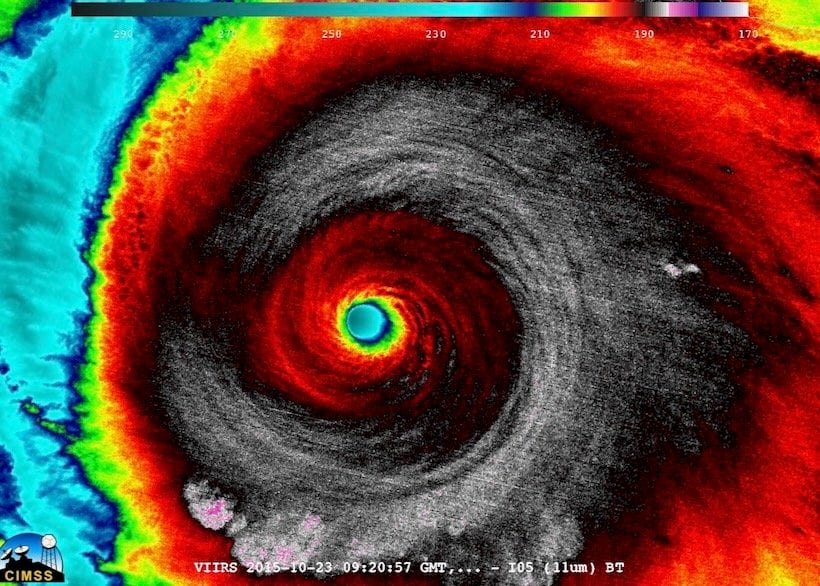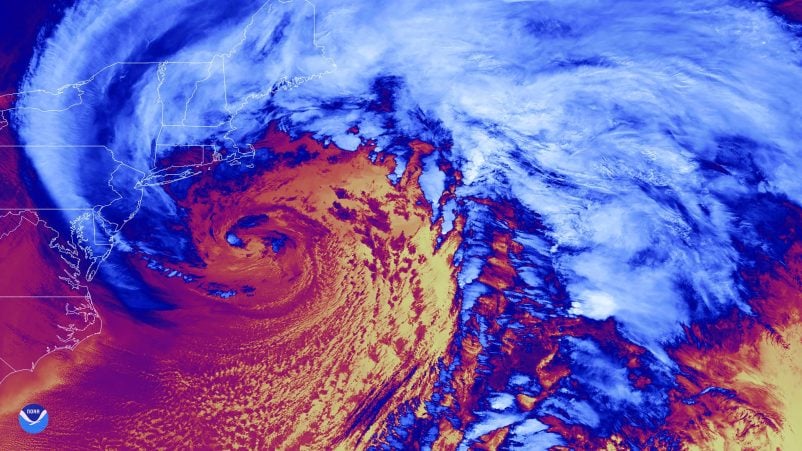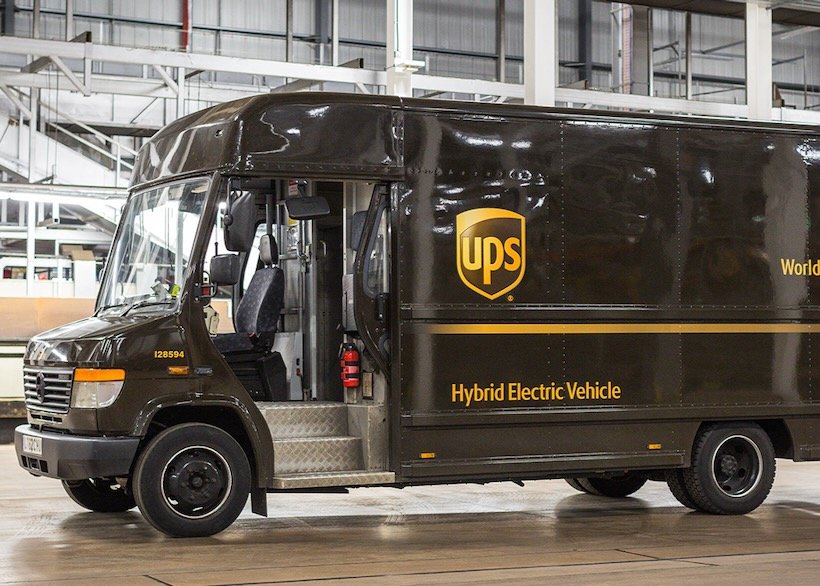ICYMI: We just officially hit the global temperature threshold that climate scientists have been warning that we absolutely should not—if we want to maintain a healthy planet. The world has had its first year-long breach of the 1.5-degree Celsius (2.7 degrees Fahrenheit) temperature rise that countries had agreed at the 2015 “COP” conference in Paris not to exceed. Though breaking the Paris Agreement was long expected to happen (even by chief negotiator John Kerry), we’ve now undoubtedly entered the era of coping with devastating climate change, not simply trying to avoid it.
Scientists, economists, politicians, and more still have to focus efforts on cutting carbon dioxide and its much-underestimated sibling, methane. That can help an already bad situation from getting nightmarish. But there’s no doubt now that adapting to a changing planet is a top challenge for humanity.

Softening the Blow of Climate Change
Without being pollyannaish (this situation is dire) we can look to some positive developments in science and logistics. In the U.S., for instance, as the frequency and cost of natural disasters keeps going up, the death rate is actually dropping. From the 1980s to the 2010s, the number of $billion+ disasters per year rose 297%, from 3.3 to 13.1. Unfortunately, deaths also went up, from 295 to 523. But that comes out to a much-smaller 75% increase. Meanwhile, the country’s population has increased 46%—meaning that the growth in fatalities, on a per-capita basis, is even less.
A smaller increase in deaths is nothing to celebrate, but it’s a sign that we’re finding ways to make natural disasters less deadly.
Technology is making these relative gains possible. Last year, Worth spoke with Ali Mostafavi, director of the Urban Resilience.AI Lab at Texas A&M University. He described how AI is helping his team better predict natural disasters, and coordinate response and recovery in the aftermath. “Using AI, we can ingest datasets related to storm rainfall, plus flood gauges and past flood models, so that we can have better predictions of areas that will be inundated,” he said. Social media also provides enormous insights into how people are experiencing disasters. But the ambition of tech tycoons—in this case, Elon Musk making it harder to access data from X (aka Twitter)—could jeopardize that.
In that same issue of Worth, we spoke with Changying “Charlie” Li at the University of Florida, who is using AI to better understand how crops grow, how to make them more productive and resilient, and how to harvest them more efficiently (using robots). Professor Li and his colleague Carlos Messina expanded on AI’s role in strengthening agriculture at the Techonomy 23: The Promise and Peril of AI conference.

Slowing Climate Pollution
On the pollution side, we are finally getting to a good tipping point: CO2 emissions may be starting to level out, even as the global economy continues to grow in the post-Covid era. Again, this is small-comfort. The U.N. Intergovernmental Panel on Climate Change recently calculated that emissions need to drop by a whopping 60% in just 11 years to get the Paris Agreement back on track. Frankly, that probably won’t happen. Just the existing plans to expand oil and natural gas production and exports in the U.S. will probably doom those plans. (Although the Biden administration is pushing to slow the growth or gas exports—a very dicey political move in a presidential election year, and one that will surely be dropped if he loses.)
But here, again, tech offers an opportunity to soften the blow. While CO2 emissions from gas are bad, leaks of unburned gas are potentially as bad as emissions from coal. That’s because the primary component of natural gas,-—methane—is 100 times more powerful at trapping heat in the atmosphere than CO2 is (at least in its first decades, before it starts settling out of the atmosphere). Cutting down on leaks is a huge, and relatively easy, way to pull a horrible problem back to just a really bad one. Cleaning up methane was the low-hanging fruit touted at the latest COP meeting in fossil-fuel rich Dubai.
And AI can play a huge role in getting leaks under control. For instance, U.S. and UK researchers have deployed machine learning to troves of inspection documents of oil and gas facilities over the years.That allows them to predict which ones are most likely to have major leaks, and focus on finding them. “The model’s predictions have resulted in an almost threefold increase in the probability of finding unintended emissions during an inspection,” says Michael Greenstone, director of the Energy Policy Institute at the University of Chicago, who helped develop the tech.
Cleaning Up Combustion
Looking further out, the long-derided process of carbon capture is finally showing signs of success—at least from concentrated sources like smokestacks. Grabbing the much-diluted CO2 from the ambient air is a much tougher proposition. But that tech is moving forward, too.
If we can’t quit our addiction to burning stuff, there may now be hope in research indicating that the earth may hold vast underground reserves of so-called gold hydrogen—perhaps enough to fuel the global economy for centuries. And the existing natural gas delivery infrastructure can (with upgrades) be used to move this potential new fuel.
Meanwhile, solar and wind do keep moving ahead. They now account for 12% of global electricity generation, up from 10% in 2021. Renewables are also the fastest-growing energy sources, and in many cases, the most economical to operate. Mark Z. Jacobson (a Worthy 100 honoree) says it’s time to stop hemming and hawing about these power sources. Combined with rapidly developing energy storage tech—wind, solar, and hydropower can be enough to solve the dirty energy problem, he tells Worth (and posits in his book No Miracles Needed).
The fact is, there’s big money to be made in clean energy: and money still does make the (warming) world go round. The latest UBS Billionaire Ambitions Report noted that the ultra-rich are investing big in green power (in many cases, spurred by moral, not just financial, motivation).
Bill Gross, founder of “technology incubator” Idealab, has helped fund six climate-positive startups, just in 2023. At the Techonomy Climate NYC conference in September, he called the entire green-energy industry a “trillion-dollar opportunity,” in part because of big government nudging from programs like the U.S. Inflation Reduction Act.
The pursuit of wealth is what got the world into a climate crisis—although it also led to an enormous boost in living standards, opportunities, and lifespan. Like it or not, the profit motivation will have to be a major driver in solving, or at least softening, the mess we have gotten ourselves into.
Worth magazine will tackle these thorny issues and many more at our conference in Silicon Valley on April 3—Techonomy Climate 2024: Encoding Resilience. Please join us. Use code ClimatePre100 to get $100 off; the offer lasts for a limited time.







